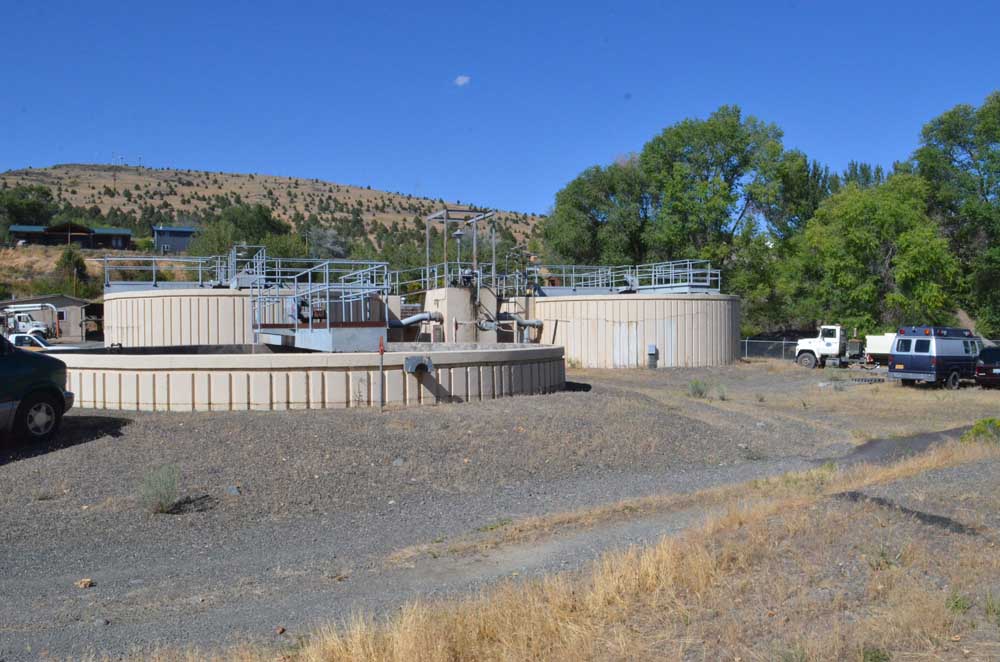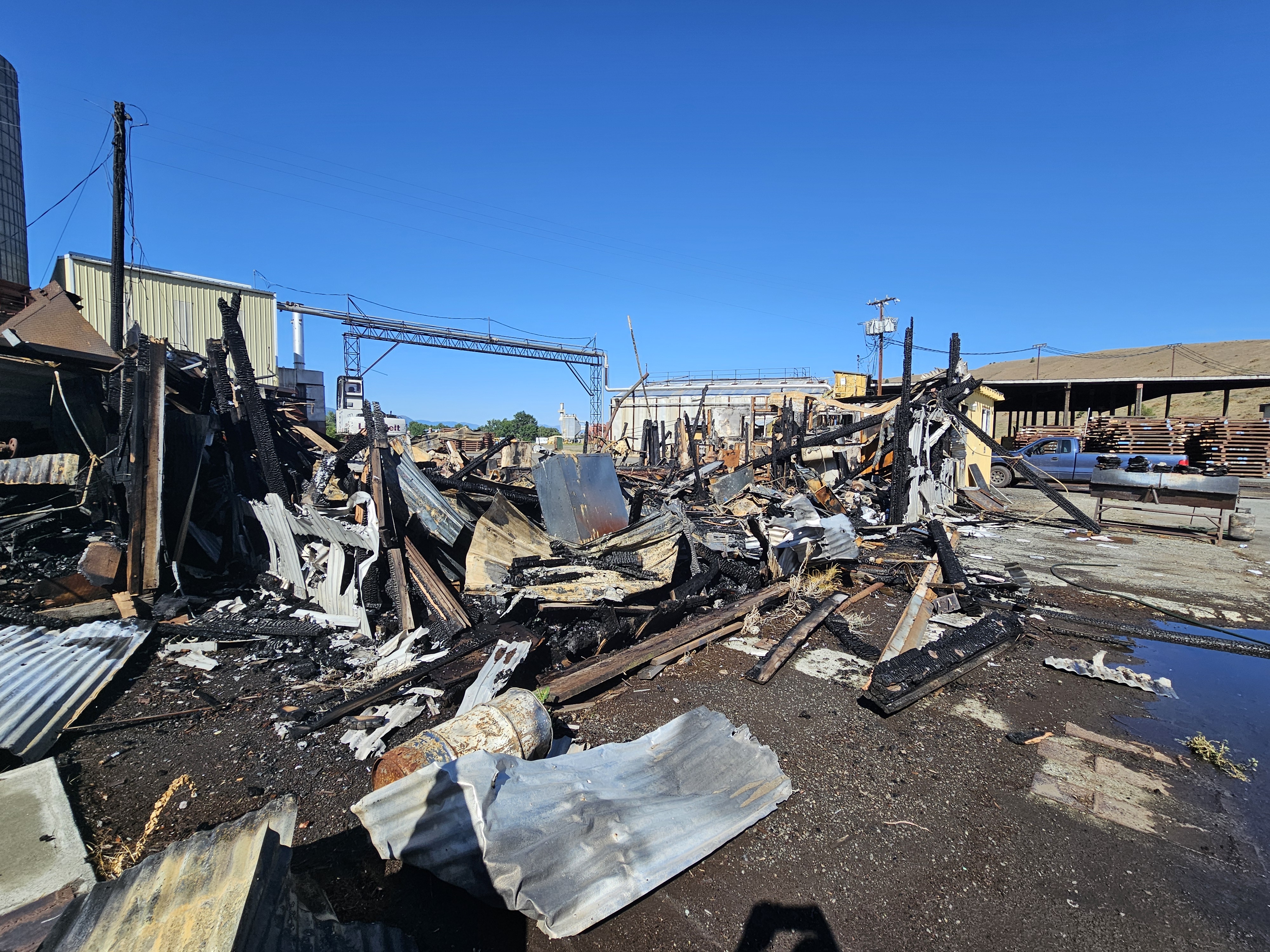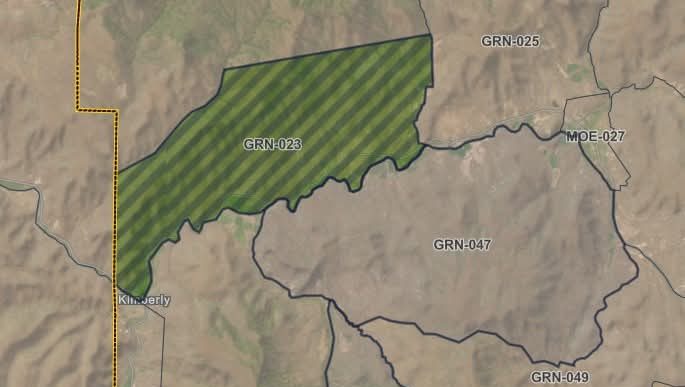PROGRESS: Numerous projects in the works in John Day
Published 1:15 pm Thursday, June 27, 2019

- Two boys ride scooters at the skateboard park at the Seventh Street sports complex in John Day.
In his first state of the city address in March 2018, John Day City Manager Nick Green called on the city to be smart about spending and to stick with its strategy for success.
Trending
He noted that a Portland State University report forecast Grant County would lose 17% of its population over the next 50 years. Declining population means less revenue for city services, he said.
“Does that have to be our fate?” Green asked. “We don’t think it does.”
One year later, Green announced plans to apply for more than $10 million in grant funding. That would be on top of the $4.5 million the city was awarded over the past two years, he noted.
Trending
“We’re undertaking some complex and ambitious projects,” Green told the Eagle at the time. “We recognize that. We also feel it’s necessary to help our community recover financially from its extended economic decline.”
The city’s strategy for growth hopes to attract digital commuters, active retirees and young working families to John Day by providing more recreational amenities, broadband internet access and improved housing stock. But the strategy depends on a number of interconnected projects and millions of dollars in grants and loans to succeed.
Economic challenges
With about 1,750 residents, John Day is the largest city in Grant County and provides many of the services not available in the smaller cities.
That includes groceries, hardware, banking, professional services, health care, dining, entertainment and employment.
Transportation to and from John Day is a challenge, with major cities located several hours away on two-lane highways that experience hazardous driving conditions at times. The city is not served by rail, and the regional airport does not offer scheduled passenger flights.
Much of the city’s land includes steep slopes and floodplain that was severely modified by historic mine dredging. Both the housing stock and the workforce is aging, and the city’s population declined over the past decades. Attracting younger workers is difficult, and there is an over-reliance on government employment.
On the positive side, John Day is a gateway to numerous recreational opportunities and is located at the intersection of two scenic byways popular with automobile, motorcycle and bicycle tourists. It is home to the unique Kam Wah Chung State Heritage Site and attracts spillover growth from Deschutes County as well as retirees.
Grant County has ranked near the bottom for employment figures among Oregon counties for a long time. The Oregon Employment Department reported that unemployment in the county increased slightly to 8.4% in March, compared to 4.4% for the state and 3.8% for the U.S.
According to data in the May 2019 draft Economic Opportunities Analysis report by Johnson Economics, the cities of John Day and Canyon City have the greatest share of the county’s employment, beyond their share of the population.
About 63% of the county’s workers are employed in John Day, which has about 23% of the county’s population. The Oregon Employment Department reported 2,381 employees in John Day in 2018. The largest employer sectors in John Day in 2018 were health care with 585 workers, agriculture and forestry with 493, retail trade with 306 and government with 118.
Johnson Economics forecasts an annual average employment growth rate in John Day of 0.8% for the next 20 years. The fastest growing sectors would be education and health care, both at 1.2%. Agriculture and forestry is forecast to grow by 0.6% and retail trade by 0.4% per year over the next 20 years.
Housing stock
According to an ongoing study by EcoNorthwest, the share of John Day residents 60 years or older is expected to increase from 36% currently to 53% in 2040. Housing stock in John Day will need to accommodate this aging population, with smaller and easier to maintain dwellings along with assisted living facilities or age-restricted developments.
“We want our community to be inviting and accessible to all our residents,” Green said in a May newsletter. “We want our older residents to be able to age in place and live comfortably in our community. We need housing options that accommodate these needs.”
Green hopes to attract more millennials, people aged 18-38 years old who account for the largest share of Oregon’s population.
“Our ability to attract and retain people in this age group will depend, in large part, on whether the city has opportunities for housing (and employment) that both appeals to and is affordable to millennials,” Green said.
That could mean building more townhouses, duplexes and other multi-family housing. Housing supply and household incomes in John Day currently are out of sync.
“There is a deficit in our housing for both low-income earners and high-income earners, with a general housing deficit for households earning over $50,000 annually,” Green said.
In an effort to spark investment in the aging housing stock, John Day established an urban renewal district that incentivizes new home construction and major remodeling. The goal is 100 new homes built in the 20-year life of the program.
To encourage new home construction within the district, the city will waive system development charges for water and sewer service and provide property owners a 7% rebate on the increase in the property’s assessed value.
The city will recoup the cost of the incentives through tax-increment financing. Taxes on properties within the plan’s boundaries will be frozen, and any future increases will go toward paying back the city for the incentives. The city expects to be repaid within seven years of a project’s completion.
Big projects
It was the need for a new wastewater treatment plant that led to many of the city’s big projects that today attract so much attention. The city acquired the 53-acre closed Oregon Pine mill site for the land needed for a new plant and then looked at ways to use the rest of the property. The result was the Innovation Gateway project.
Finding the financing to replace the 70-year-old wastewater treatment plant with one costing $10.3 million, however, may be difficult. Green said the city’s goal is to finance 80% of the project with grants and 20% with loans. But Green has also noted that the best way to finance a new treatment plant is by increasing the tax base through growth.
The city council approved the designs for a high-tech treatment plant last June. A hydroponic bioreactor from Sustainable Water of Glen Allen, Virginia, could produce Class A reclaimed water for reuse around the city. The 13,000 feet of purple pipe needed to distribute 80 million gallons of reclaimed water could cost $1 million.
Reclaimed water could be used to irrigate public parks and sports fields and the city golf course, landscaping around the proposed Innovation Gateway project, non-residential toilet flushing, log deck watering at Malheur Lumber Co., process water for a proposed torrefaction plant and for growing produce in the city’s future greenhouse.
The 83-acre Innovation Gateway project includes the Oregon Pine brownfield site and city land on both sides of the John Day River. Using grants, the city contracted with the Walker Macy landscape architect firm in Portland to come up with conceptual designs for the project. A major component is extending Seventh Street west to Patterson Bridge Road, opening up more riverfront to the public and vacant land for residential development.
Other conceptual plans were presented to the city council on May 28. The Phase 1 plans included a refurbished planer shed used as an open-air pavilion for farmers markets and other functions, a 150- to 170-room hotel, a water garden around the former sawmill building, a riverfront beach and a lake.
A main attraction for the Innovation Gateway will be a commercial greenhouse that currently has three nearly completed bays and could be expanded by two more bays. The city took out a state loan to pay for the three bays, with payments coming from the sale of produce to local markets, schools and restaurants.
The $337,590 three-bay greenhouse from EuroMex is expected to produce about 30 tons of produce each year — enough to meet the needs of the John Day area. Two additional bays, if constructed, could be used to produce other commercial products, such as specialized hops for craft brewers.
EcoNorthwest, which was contracted to help draft a comprehensive economic development strategy for the John Day area, reported that export-oriented hydroponic businesses are complex and have a high failure rate. In addition to high labor and energy costs, the nearest export markets for John Day are three hours away, project manager Matt Craigie said.
The city is also promoting Main Street revitalization efforts. A beautification project was completed in 2014 that included new sidewalks along Main Street and South Canyon Boulevard and replaced highway lighting with old-fashioned light posts.
In March 2017, at the request of some downtown merchants, the city used a grant to purchase the Weaver Building with plans to rehabilitate the aging structure. The 12,000-square-foot two-story building included four commercial business on the ground floor and space for six residential units upstairs.
The city used another grant to pay $75,924 to Alpine Abatement Associates of Bend for asbestos and lead abatement. Much of the interior is now stripped down to studs, and on May 28 the city council approved conditions for the sale of the building.
The city will take sealed bids from interested buyers on June 25 and entertain options for owner financing. The Weaver Building will be included in the John Day Urban Renewal Area and qualify for a 15% rebate on eligible improvements.
The city also applied for two Main Street Revitalization grants from the state on behalf of two downtown businesses. Greg and Marla Armstrong were awarded $200,000 to match the $446,000 they intend to invest in a major remodel of the Len’s Drug store. Plans call for increasing retail space by about 4,500 square feet by expanding west.
Sports complex
“Our investments in recreational amenities and a restored riverfront are magnet investments,” Green said in the May newsletter. “They are designed to attract and retain residents who want what we have to offer.”
The city has a first-class sports complex on Seventh Street not far from the county fairgrounds that features baseball and softball fields, tennis and basketball courts, a walking track, a fishing pond and a skatepark that is operated by the John Day-Canyon city Parks and Recreation District.
Rough-in work for a single-track mountain bike park on the school district land overlooking the sports complex was completed last summer. Parking spaces and a pump track were added this year. The nonprofit Grant County Economic Council led the fundraising for the project, and the Eastern Oregon Trail Alliance provided technical guidance.
A new playground has been installed this year, and splash pad will be completed at the east end of the complex this year. The kiddie park features two playground areas, one for ages 2-5 and one for ages 5-12, with swings, tube slides, a climbing wall, platforms, monkey bars, an ADA-compatible swing and a pour-in-place rubber playground surface.
The seasonal 87-by-37-foot concrete splash pad will be built near the kiddie park and include three 7-inch water rings, three bucket dumps, one unit with seven ground sprays, a wildfire hose, a question mark, a hitching post and a 6-foot-high mushroom-shaped fountain in the center.
Trails and a pool
Connecting the sports complex to a new city park on the John Day River and the Innovation Gateway project will be a series of interconnecting riverfront trails. An Oregon Parks and Recreation Department advisory committee ranked the city’s trail design as the No. 1 non-motorized use proposal for the 2018 Recreational Trails Program grant funding and recommended awarding $191,300 for the trail system.
In March, the city council got a first look at river restoration plans developed by Walker Macy that call for altering a mile-long section of the river from Canton Street to Innovation Gateway. To replace the straight and narrow channel left by historic gold dredging operations, a meandering river with side channels and wetlands would be constructed on city-owned land north of the river. State and federal funds would pay for the project, not city money, Green said.
In 2018, the city acquired 10 acres of land along the John Day River from Colleen and Celeste Hill for additional park land. Property on the north side of the river includes the Davis Creek ravine, which could be used for a future botanical garden and a new trail to the sports complex.
About four acres on the south side of the river will be developed for the new Hill Family City Park. A footbridge across the John Day River will connect the new park to the riverfront trail system, and a trail built along Canyon Creek would connect the park to the Kam Wah Chung State Heritage Site and downtown.
Establishing a new city park is part of a larger and complicated set of decisions.
The state has long expressed interest in acquiring the city park land surrounding the Kam Wah Chung site, including the Gleason Pool, for construction of a new interpretive center.
With a potential surging interest in the historic site by Chinese tourists, the state’s investment in a new interpretive center would be good for the city’s economy. At the same time, the 61-year-old public swimming pool — the second oldest in the state — has become a financial liability for the city. Repairing and replacing the aging pipes and equipment is becoming too expensive for the city.
An advisory committee has been studying ways to replace the pool with assistance from professional consultants hired by the city. Consensus was reached for a target figure of $4.5 million for construction of a 6-lane 25-meter pool and $100,000 per year for operations and savings.
But those figures are beyond the reach of John Day, which is looking at major investments in the new sewer treatment plant as well as the Innovation Gateway and riverfront projects. The city hopes to leverage the sale of its land around Kam Wah Chung to cover part of the construction costs for a new pool and establish a new county service district to raise the remainder of the construction costs and to handle the annual operational costs.









